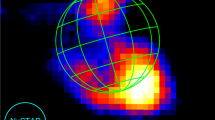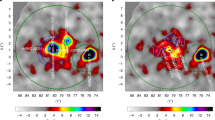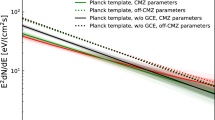Abstract
AS is well known1, one effective method for the observation of the disintegration of atomic nuclei by cosmic rays is the method of the 'thick-layer' photographic plates suggested and developed in the Radium Institute of the Academy of Sciences of the U.S.S.R.2. The tracks of these disintegrations in such plates are mostly in the form of forks with irregular angular distribution ('stars'). They correspond chiefly to protons, more seldom to α-particles and still more seldom to particles with a stronger 'ionization power'. The 'yield' of nuclear disintegrations at sea-level is approximately 8 × 10-3 disintegrations in an hour per 1 cm.2 of the area of the plate. This yield rapidly increases with height, reaching a value fifty times greater at a height of 7,000 metres3. At sea-level the greatest percentage of disintegrations corresponds to the triple forks. Forks with five tracks are met comparatively seldom, and only with the increase of height is the slow increase of the number of ejected particles in one disintegration observed. In addition to the disintegrations in the form of stars, there are observed also disintegrations in the form of 'showers', that is, in the form of forks with a pronounced unilateral direction of tracks (inside the narrow solid angle). Tracks in the showers may belong to protons as well as to mesotrons. We suggested in previous papers4 the possibility of the registration of slow mesotrons in the 'thick-layer' plates, and also the possibility of estimating their mass from the average distance between two neighbouring developed grains. In one of our papers5 there was shown a shower consisting of about a hundred heavy particles, which was obtained on a plate exposed at a height of about 9,000 metres.
This is a preview of subscription content, access via your institution
Access options
Subscribe to this journal
Receive 51 print issues and online access
$199.00 per year
only $3.90 per issue
Buy this article
- Purchase on Springer Link
- Instant access to full article PDF
Prices may be subject to local taxes which are calculated during checkout
Similar content being viewed by others
References
Shapiro, M., Rev. Mod. Phys., 13, 58 (1941).
Myssovsky, L., and Tschishow, P., Z. Phys., 44, 408 (1927). Jdanov, A., J. Phys. et le Rod., 6, 233 (1935).
Jdanov, A., Bull. Acad. Sci. URSS., 4, 266 (1940).
Jdanov, A., C.R. Acad. Sci. URSS., 28, 109 (1940). Pilippov, A., Jdanov, A., and Gurevich, I., C.R. Acad. Sci. URSS., 18, 169 (1938); J. Phys. U.S.S.R., 1, 51 (1939).
Jdanov, A., Nature, 143, 682 (1939); C.R. Acad. Sci. URSS., 23, 29 (1939).
Jdanov, A., Pernlov, N., and Deisenroth-Myssowskaya, M., read at the meeting of the Chemical Department of the Academy of Sciences of the U.S.S.R., Feb. 6, 1943, and sent to the Physical Review.
Author information
Authors and Affiliations
Rights and permissions
About this article
Cite this article
JDANOV, A. Anomalous Disintegration of Nuclei by Cosmic Rays. Nature 154, 616–617 (1944). https://doi.org/10.1038/154616a0
Issue Date:
DOI: https://doi.org/10.1038/154616a0
This article is cited by
-
Zum Mechanismus der hochenergetischen Kernprozesse der Ultrastrahlung
Die Naturwissenschaften (1947)
Comments
By submitting a comment you agree to abide by our Terms and Community Guidelines. If you find something abusive or that does not comply with our terms or guidelines please flag it as inappropriate.



